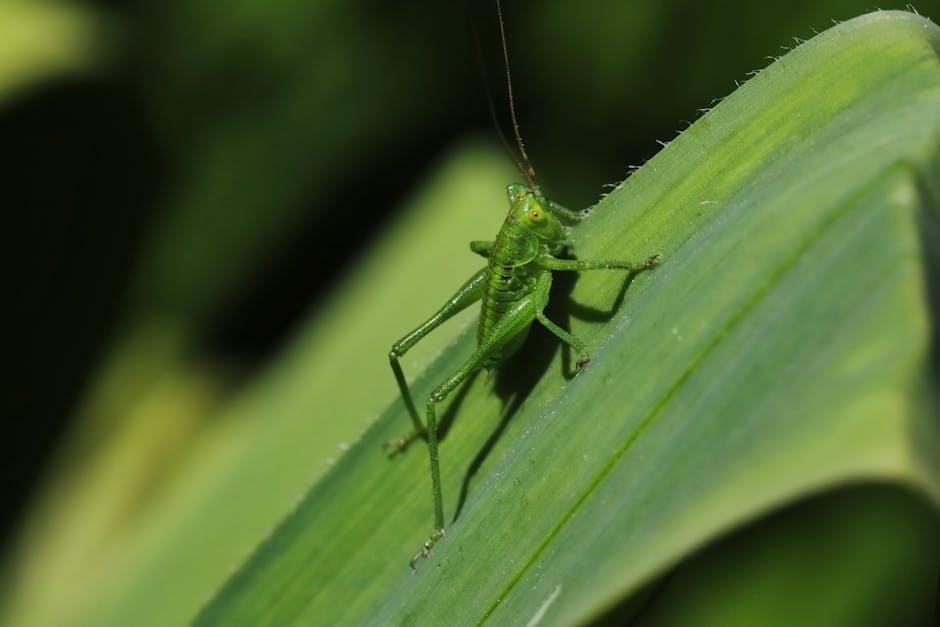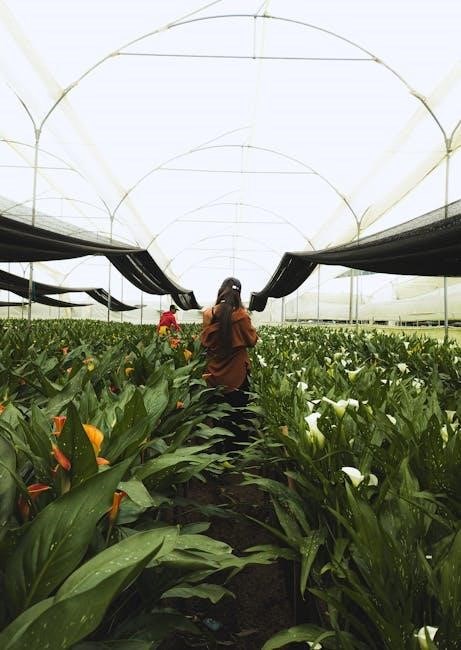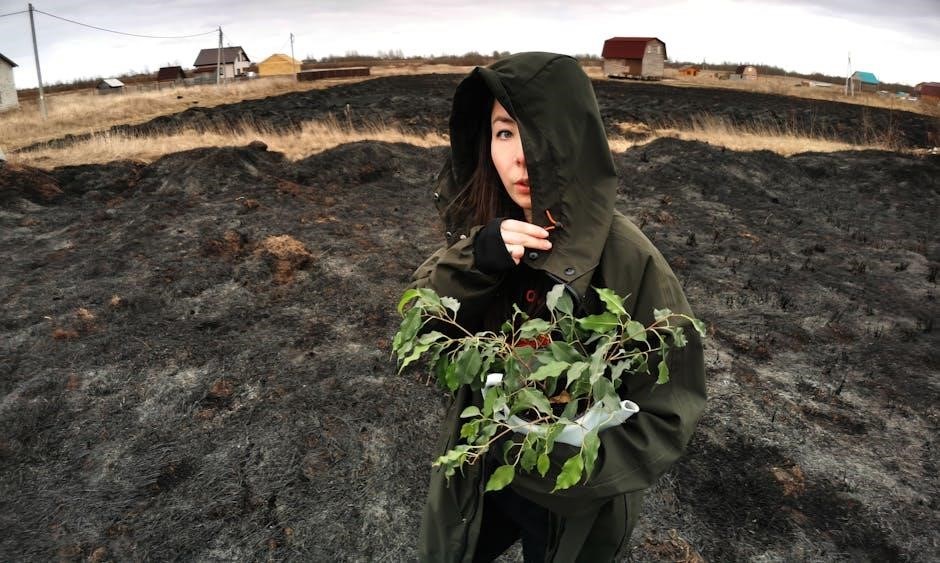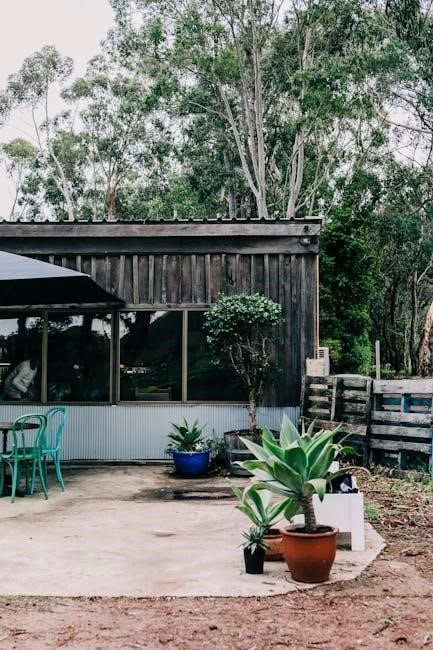This guide provides tailored advice for Zone 6b gardeners, offering insights into planting times, soil conditions, and care tips for vegetables, fruits, and flowers, ensuring optimal growth in the local climate.
Understanding USDA Hardiness Zone 6b
USDA Hardiness Zone 6b is defined by its average annual extreme temperature range of -5°F to 0°F (-20.6°C to -17.8°C). This zone is suitable for plants that can tolerate moderate cold but may need protection during harsh winters; Zone 6b covers areas with moderate climates, allowing for a wide variety of plants to thrive. Understanding your specific hardiness zone is crucial for selecting plants that can survive and flourish in your local conditions. This zone is ideal for gardeners who want to grow both cool- and warm-season crops, as the growing season is long enough for most plants to mature. Proper planting timing is essential to maximize success.
Importance of Knowing Your Planting Zone
Knowing your planting zone is essential for successful gardening, as it determines which plants thrive in your area and when to plant them. Zone 6b’s moderate climate supports a wide range of plants, but timing is critical. Understanding your zone helps you avoid planting too early or too late, reducing the risk of frost damage. It also ensures you choose plants suited to your local conditions, maximizing growth and yield. This knowledge is vital for both beginners and experienced gardeners, as it guides decisions on soil preparation, seed selection, and care routines tailored to Zone 6b’s specific characteristics.

Frost Dates and Soil Temperature in Zone 6b
Zone 6b typically experiences its last frost in early May and first frost in late September. Soil temperature plays a crucial role in determining optimal planting times, ensuring healthy growth.
First and Last Frost Dates in Zone 6b
Zone 6b typically experiences its last frost in early May and its first frost in late September or early October. These dates are critical for gardeners, as they determine when it is safe to plant tender seedlings outdoors and when to prepare for the end of the growing season. Knowing the average frost dates helps gardeners avoid frost damage to plants and ensures timely planting. For Zone 6b, the last frost date is usually around May 1st to May 15th, while the first frost date occurs approximately between September 15th and October 1st. These dates vary slightly depending on specific microclimates and weather patterns.
Soil Temperature Requirements for Planting
Soil temperature plays a crucial role in successful planting in Zone 6b. Different plants require specific soil temperatures for optimal germination and growth. For instance, cool-season crops like broccoli and spinach prefer soil temperatures between 40°F and 50°F, while warm-season crops such as tomatoes and peppers thrive in soil temperatures above 55°F. Understanding these requirements ensures seeds germinate properly and plants establish strong root systems. In Zone 6b, soil temperatures typically reach suitable levels for planting in late spring and early fall, making these the best times to sow seeds and transplant seedlings to maximize growth and productivity during the growing season.

Growing Season in Zone 6b
Zone 6b has a moderate growing season, typically lasting around 160-180 days. The climate supports a wide variety of plants, with warm summers and cool, wet winters, making it ideal for diverse gardening endeavors.
Length of the Growing Season
Zone 6b enjoys a moderate growing season, typically spanning around 160 to 180 days. This duration allows most vegetables and plants to mature before the first frost arrives. The season begins after the last spring frost, usually in late April or early May, and ends with the first fall frost in mid to late October. This timeframe is sufficient for both cool-season and warm-season crops, making Zone 6b a versatile region for gardening. The relatively long growing season supports a wide variety of plants, ensuring a productive harvest for gardeners throughout the year.
Best Time to Start Planting
In Zone 6b, the best time to start planting depends on the type of crop. For cool-season crops like broccoli and spinach, early spring (late March to early April) is ideal. Warm-season crops such as tomatoes and peppers should be started indoors 4-6 weeks before the last frost date and transplanted outside after the soil warms up. Fall crops, such as kale and carrots, are planted in late summer, about 8 weeks before the first frost. This staggered approach ensures optimal growth and maximizes the growing season, allowing gardeners to enjoy a diverse and bountiful harvest throughout the year.

Planting Schedule for Zone 6b
Zone 6b has a moderate growing season, with planting starting in early spring and continuing through late summer for fall crops. Start seeds indoors 4-6 weeks before the last frost date for warm-season crops like tomatoes and peppers. Direct sow cool-season vegetables like spinach and carrots in early spring. For fall crops, plant in late summer, 8 weeks before the first frost. This schedule ensures optimal growth and a bountiful harvest throughout the year.
Spring Planting Guide
In Zone 6b, spring planting begins after the last frost date, typically in late April or early May. Start by preparing the soil, testing its pH, and amending it if necessary. Cool-season crops like spinach, lettuce, carrots, and broccoli can be directly sown as soon as the soil is workable; For warm-season crops such as tomatoes and peppers, start seeds indoors 4-6 weeks before the last frost date and transplant them outside when the weather stabilizes. Hardy vegetables like peas and onions can be planted even earlier, as they tolerate light frosts. This period is also ideal for dividing and transplanting perennials to ensure healthy growth throughout the season.
Fall Planting Guide
Fall planting in Zone 6b is ideal for cool-season crops, which thrive in cooler temperatures. Start by preparing the soil in late summer, about 8 weeks before the first frost date. Plant vegetables like spinach, kale, and broccoli, which mature quickly and tolerate light frosts. Root vegetables such as carrots, beets, and radishes also perform well. Incorporate compost to enrich the soil and improve drainage. Sow seeds at the correct depth and spacing, and keep the soil consistently moist during germination. For flowers, plant bulbs like daffodils or tulips in early fall for vibrant spring blooms. Timing is key to ensure a successful harvest before winter sets in.

Vegetable Gardening in Zone 6b
Zone 6b supports a wide variety of vegetables, with its moderate climate allowing for both cool-season and warm-season crops to thrive, ensuring a successful harvest season.
Popular Vegetables for Zone 6b
Zone 6b gardeners can enjoy a wide variety of vegetables, including tomatoes, peppers, cucumbers, zucchini, carrots, beets, and green beans. Root vegetables like carrots and beets thrive in the cooler spring and fall seasons, while warm-season crops such as tomatoes and peppers excel in summer. Broccoli, spinach, and lettuce are excellent choices for early spring or late summer planting, as they prefer cooler temperatures. Herbs like basil and cilantro also grow well in Zone 6b’s climate. With proper timing and care, gardeners can achieve bountiful harvests of their favorite vegetables throughout the growing season.
Specific Planting Tips for Vegetables
For Zone 6b, start seeds indoors 4-6 weeks before the last frost date for vegetables like tomatoes and peppers. Plant cool-season crops like broccoli and spinach in early spring or late summer. Soil preparation is key—ensure well-draining soil with a pH between 6.0 and 7.0 for most vegetables. Sow seeds at the depth and spacing recommended on seed packages. Succession planting can extend the harvest season for crops like lettuce and radishes. For warm-season vegetables, wait until soil temperatures reach 60°F before direct sowing. Mulch around plants to retain moisture and suppress weeds. Proper spacing and sunlight exposure are essential for optimal growth and yield in Zone 6b.

Fruit and Flower Planting in Zone 6b
Zone 6b supports a variety of fruits and flowers, with optimal planting times in spring and fall. Choose species like strawberries, blueberries, roses, and lilacs for success.
Best Fruits to Grow in Zone 6b
In Zone 6b, gardeners can successfully grow a variety of delicious fruits. Strawberries, blueberries, raspberries, and blackberries thrive in the region’s moderate climate. Apples and pears are excellent choices, as they tolerate the zone’s temperature fluctuations. Cherries, both sweet and sour, also perform well. grapes are another great option, especially for homemade wines or fresh eating. Be sure to select fruit varieties with chill hours suitable for Zone 6b to ensure proper flowering and fruiting. Proper soil preparation and sunlight exposure are key for maximizing fruit production and flavor in this zone.
Optimal Flower Planting Times
In Zone 6b, the optimal time to plant flowers depends on the type and desired bloom period. For spring-blooming flowers like tulips and daffodils, planting in late summer or early fall ensures proper root establishment before winter. Pansies and violas can be planted in early spring, about 4-6 weeks before the last frost date, for vibrant early-season color. Annuals such as marigolds and zinnias thrive when planted after the soil has warmed and the danger of frost has passed, typically late May. Perennials like coneflowers and black-eyed Susans can be planted in spring or fall, but fall planting is preferred for better root growth. Timing is crucial to maximize blooms and plant health.

Common Challenges in Zone 6b
Zone 6b gardeners face challenges like unpredictable late spring and early fall frosts, which can damage plants. Pests and diseases also thrive in the region’s climate.
Frost Protection Strategies
In Zone 6b, protecting plants from frost is crucial to prevent damage. Use row covers or breathable fabrics to shield plants during cold snaps. Bring tender plants indoors or relocate them under cover. Apply mulch around bases to insulate soil. Water plants before frost to retain heat, but avoid overwatering. Use stakes or frames to support covers without direct contact. Avoid using plastic, as it can cause ice formation. Implement frost blankets or cold frames for extended protection. Timing plantings after the last frost date minimizes risk. Monitor weather forecasts to prepare for unexpected frosts. These strategies help safeguard your garden during Zone 6b’s unpredictable frosts.
Dealing with Pests and Diseases
In Zone 6b, common pests like aphids, slugs, and snails can damage plants. Regularly inspect plants and use organic controls like neem oil or insecticidal soap. Encourage beneficial insects, such as ladybugs, to balance ecosystems. For diseases, practice crop rotation and remove infected material to prevent spread. Treat fungal issues with fungicides and improve air circulation. Keep the garden clean to reduce pest habitats. Monitor for signs of stress, as healthy plants are more resistant. Use physical barriers for pests like slugs. Apply chemical treatments as a last resort. Maintain soil health to promote strong plant immunity. Early detection and action are key to managing pests and diseases effectively in Zone 6b gardens.
Planting in Zone 6b offers a rewarding experience with its moderate climate and ample growing season. By understanding frost dates, soil temperatures, and timing, gardeners can maximize their harvests. Start seeds indoors before the last frost and transition plants outdoors post-frost for optimal growth. Regularly monitor for pests and diseases, using organic methods whenever possible. Adapt strategies based on local microclimates to ensure success. With proper planning and care, Zone 6b gardeners can enjoy thriving vegetables, vibrant flowers, and delicious fruits throughout the season. Happy gardening!